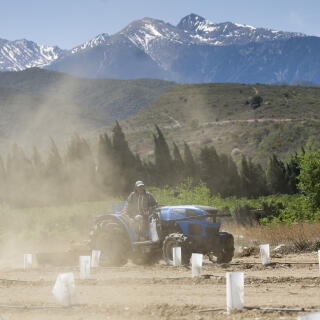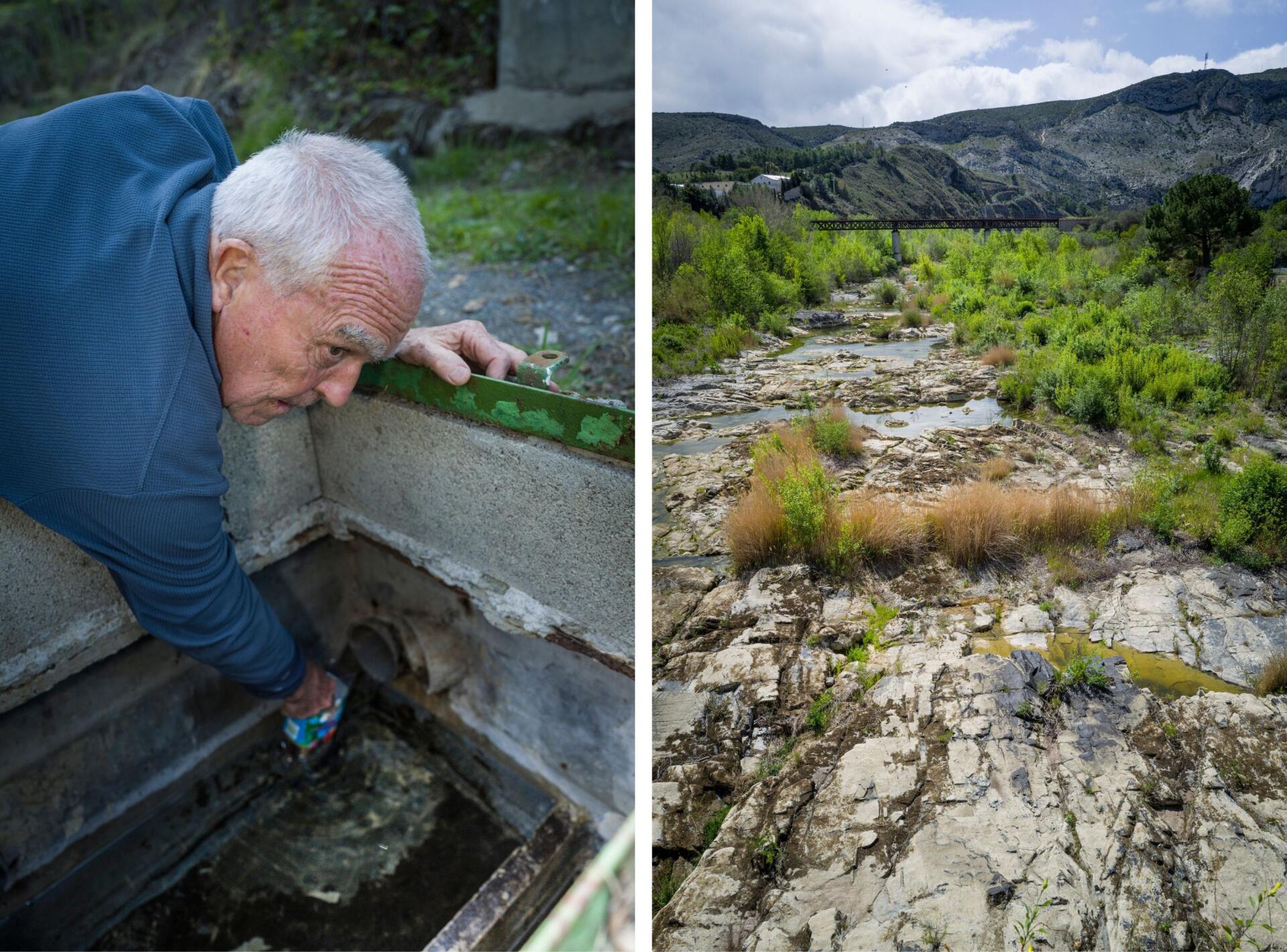


Persistent drought in southern France: 'This time, it's brutal'
FeatureFor the past two years, the region has been suffering from a structural water shortage. Scarce resources are forcing farmers to adapt their practices, and could lead to a review of land-use planning.
Daniel Aspe picked up the plastic bottle with the neck cut out and lay down on the forest floor. The mayor of Escaro, a small village in the French Pyrenees, plunged the worn object into the manhole dug in front of the water inlet that supplies his village, and timed how long it took to collect two liters: 14 seconds. He then performed a calculation he knows well, multiplying the seconds by 24 hours: The flow rate was still a little too low for the daily consumption of the 80 inhabitants. "Although we don't wash to save water," said the elected official, joking to overcome his concern.
On that late April day, the sun glinted gold on the mountainsides. A few filaments of snow streaked the peaks, while lower down, the Mediterranean vegetation held out. Here and there stood skeletons of broom and holm oak, so tough yet so thirsty. With the recent tramontane northern winds, the local fire and rescue service had warned that the risk of fire was at its highest.
Although the light-saturated panorama is magnificent, it remains almost unchanging: For the past two years, the clouds have only passed surreptitiously, without stopping, from the high cantons to the Roussillon plain. The rainfall deficit reached 60% in some months, and the snowfall 75% in 2023. Prefectoral decrees restricting water use have followed one after another without interruption since June 2022.

For the inhabitants of Escaro, the real problem comes in winter, because, from April 15 to October 15, the village receives water from the Nyer canal. The rest of the time, the canal is privately owned and used to generate hydroelectricity. At first, the mayor, a retired engineer, wasn't too keen on the idea of bringing up – once again – the shortages and the tankers that have come to fill his water tower a dozen times this winter. It's a question of image for the former mining village. By February, four other communes in the Pyrénées-Orientales department had been supplied in this way, while some 40 others were being closely monitored.
Aspe eventually described his efforts to raise awareness among his constituents, their joint conservation efforts and their hunts for leaks. Under the water tower is a flexible cistern – one of those used in near-desert countries – so as not to lose the slightest drop of water in the event of an overflow. It is used by a couple of farmers and a few horses. "We're staying positive," said the mayor.
Downstream, the Château de Thorrent, flanked by its two medieval towers, has been fed by a spring for over 1,000 years. Vice-president of the Parc Naturel Régional des Pyrénées Catalanes and mayor of Sahorre (a village of 400 inhabitants), Olivier Gravas (left wing) his family and his 170 ewes depend on it. "I'm one of the few shepherds born in Neuilly-sur-Seine [one of the most affluent suburbs of Paris]," he said laughing. "And perhaps one of France's first climate refugees if the spring dries up." The organic lamb breeder is dreading the approaching summer season: Will there be enough to feed and water his flock in the foothills of the Canigou?
You have 73.13% of this article left to read. The rest is for subscribers only.
